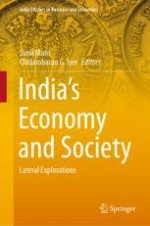2021 | OriginalPaper | Buchkapitel
4. Regional Concentration of Industries in India: What Does the Recent Data Say and How to Understand the Implications? A Perspective
verfasst von : K. V. Ramaswamy
Erschienen in: India’s Economy and Society
Verlag: Springer Singapore
Aktivieren Sie unsere intelligente Suche, um passende Fachinhalte oder Patente zu finden.
Wählen Sie Textabschnitte aus um mit Künstlicher Intelligenz passenden Patente zu finden. powered by
Markieren Sie Textabschnitte, um KI-gestützt weitere passende Inhalte zu finden. powered by
